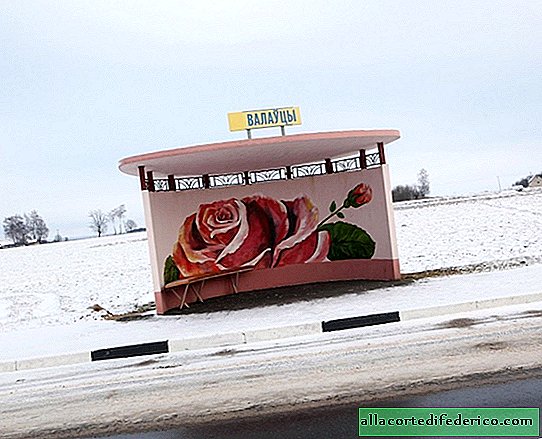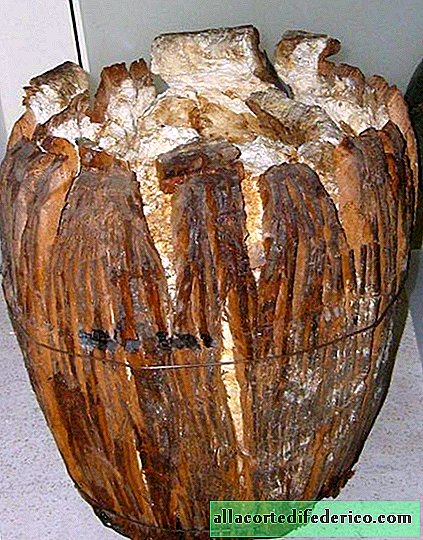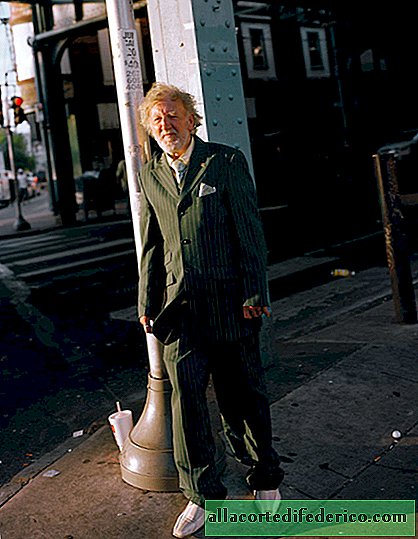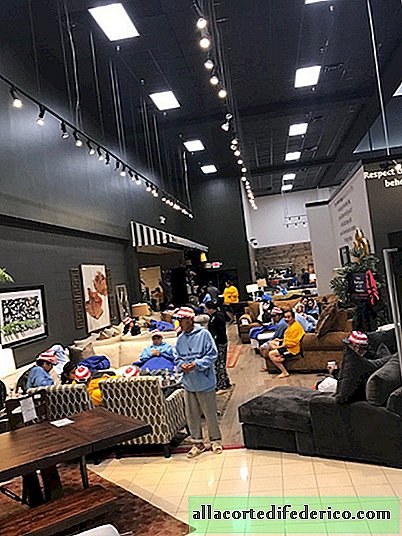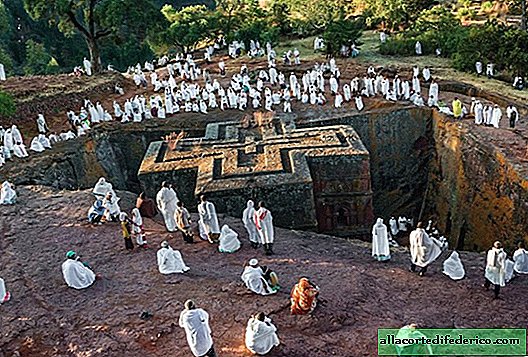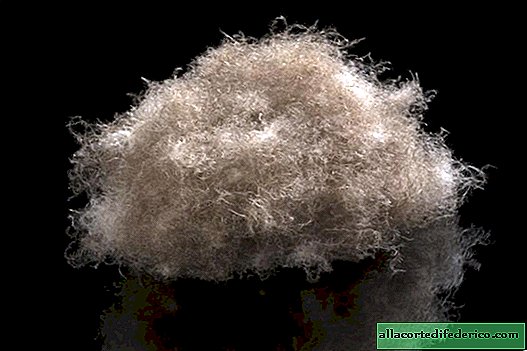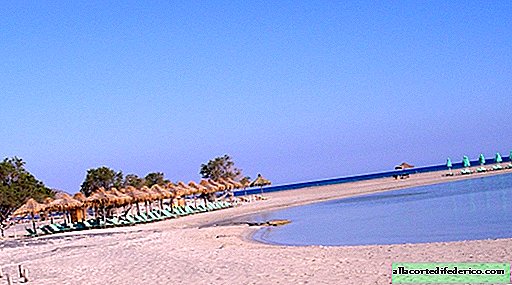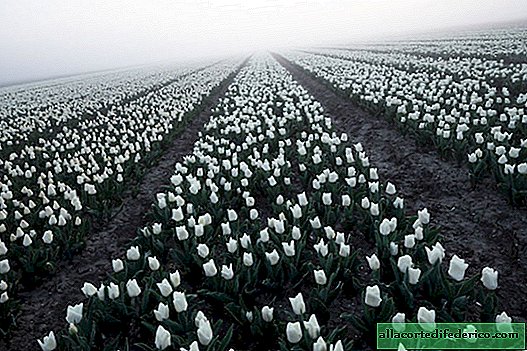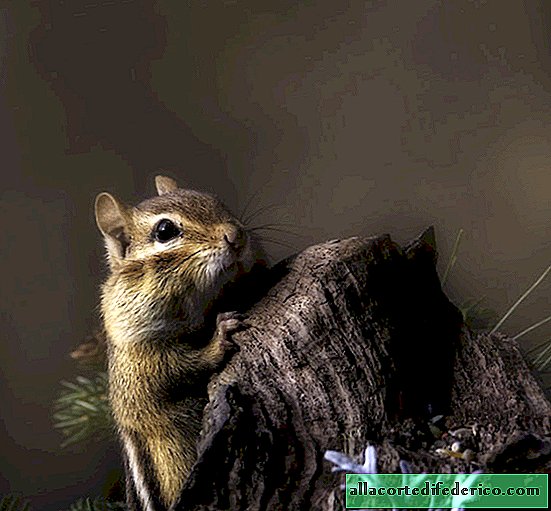Home for Satan and the Command Post
We arrived in the village. It is the only one, it’s also central, the street and general store on it. We bought food, stand, waiting for colleagues. Two jeeps drive up, people thrown out in camouflage fall out of them. And then a loud conversation about who climbed, where and how climbed up in front of the door. And the saleswoman listens, by golly sure that she listens. Fortunately, I hope not to report. I do not like this situation, really do not like it. Finally, we decide to go. We plunged into cars and moved to a resting place - a small shale career. A quarry without grass, with flat areas would be a wonderful resting place if it were not for the stink of pig manure brought stably by the wind. Two hundred meters to the nearest silo, our colleagues told us, we’ll get straight there. Once there lived in the silos a formidable intercontinental ballistic missile R-36M UTTH, otherwise called Satan. But now there is no rocket inside, only a house remains. About the house and other underground structures will be my today's story.
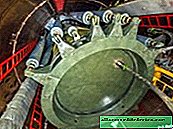
Come out. Having jumped over the stone ridge, we immediately saw the turret of the guardhouse, but not two hundred meters, but at least a kilometer. Someone clearly has a faulty eye. We walked through thickets of wild peas and hemp fields. I am not inclined to believe that it is grown locally - too big and chaotic plantings. But I am sure that in the fall there will be enough harvest for all the surrounding villages. Separate plants are far beyond my height.

After half a kilometer hemp plots ended, and with them solid soil. Before the gaze stretched either a swamp or a lake. It was the epicenter of odor stercoris. A tractor arrives several times a day from a neighboring pig farm, dragging a barrel with a drain crane on a trailer. At the top of the hill, cranes opened and the liquid, aromatic products of the pig’s intestines flowed directly onto the soil, flowing downhill. So, over the years significant stinky smooth surfaces of first-class natural fertilizers have flowed. Grass bumps stuck out from the brown-black slurry, in some places the water was bordered with a dung crust cracked in the sun. The surface springed like a quagmire, trying to swallow careless travelers. We, jumping from hummock to hummock, hesitantly moved forward. A couple of times the bumps disappeared, and we had to look for a workaround.

Finally, we found a passage and went out onto the road (poured in ruts by puddles of manure diluted with rains). But this road led directly to the position. The missile mine itself was mothballed after being left by the military. A concrete slab on the cover, a layer of soil on the slab, flowers and grass from the soil - if it were not for the ground buildings, it would be very difficult to find it.
However, the pioneer colleagues dug a narrow hole under the slab leading to the premises of the mine head. We take off our backpacks, exhale and dive forward into the black breath of a manhole breathing in coolness. It is time to find out how deep the rabbit hole is.

Squeezing through, I find myself in a low room with steel walls. The smell of fecal lakes noticeably decreases. From the room you can crawl in different directions - I choose a free hole. A little forward, and then a right angle into a round hole. There is still a turn and here I am behind the steel wall. From here the road lies down, through a pressure gate with four locking bolts in the lid. The room under it is quite high (you can stand upright), and from there go down even lower to the very edge of the shaft.

From the forty-meter depth I am only separated by a small railing on the right and left. The icy darkness of the void opened in the center. However, a powerful beam of a lantern temporarily expels darkness, filling the void with warm domestic light.
Down to the very bottom of the shaft, there are several open ladders, but I do not dare to go down them. Now, if I had to climb them, it’s not a question, but something keeps me from descent. Perhaps the gloves forgotten at the top.


I uncover the tripod and begin to photograph the mine, while in the meantime, colleagues appear on other sides who have descended through other passages around the head. An hour I am having fun with staging lighting and angles. And if relatively good shots come out from the top-down view, I frankly do not like the bottom-up view. I urge a colleague to help. He shines his light, and I extend the tripod the entire two-meter length and put the camera far ahead for a couple of shots "from the center." Fortunately, I grabbed the remote shutter release cable.
Having dismissed the camera angles, I understand that a considerable time has already passed and it would be time to get out. Of course, talking about moving to other rooms of the headroom is not even a question, and I won’t grab the stars there either. Only a descent into the mine will help me, but without faith and insurance, I just won’t be able to take off, shine and hold onto the stairs at the same time. Therefore, I leave the silos with the feeling of a job well done.

The way back we make up much more competently, not getting on bumps, but following the road. The colleagues who were waiting for us in the camp had already managed to cook kebabs and start drinking strong alcohol and light mead. Mead, by the way, I really liked it - I put aside my thought about what it would be worth to buy one. After dinner, we begin to prepare for the second goal of our trip - a visit to the UKP (Fortified Command Post), which operated this (and five other) missile silos.
The Code of Criminal Procedure itself is not nearby - you can’t walk on foot, and the entrances to it are not for our city minivan. But the jeep would have driven. After conferring, we decide that the two of us will be taken in a jeep. There we will go to inspect the UKP, and the driver will stay in bed in the car until morning. In less than four hours, we certainly won’t meet it.
So we did. We arrived in a secluded place, said goodbye to the driver and disappeared into the darkness of the night. In general, the UKP is under conservation and is protected from ferrous metal thieves by order of the Ministry of Defense on duty shift guard stationed on the territory. But if you behave quietly, then you can see.
Leaving behind the approaches, an intact fence without holes and barely visible trenches hunting legs, we delved into the territory. Somewhere here there was supposed to be a descent into the underground terraces that led to the entrance to the UKP. The descent into the gullies was populated by a dozen sleeping birds, ranging in size from a dove to a sparrow. The frightened birds flapped their wings and climbed to their faces. One especially stupid dove pounded for a whole minute on the grate, making noise and having achieved that it had to be caught by hands and thrown out.
We walked along the hills and reached the entrance to the UKP, kindly opened by colleagues yesterday. We should have closed it after ourselves, but more about that later. Structurally, the UKP is the same silo, but inside is not a rocket, but a twelve-level cylinder-container. The cylinder is suspended on shock absorbers, which allows it to dampen seismic vibrations from possible atomic explosions and, thereby, maintain the operability of the equipment and the bones of the duty shift.


In UKP quite closely, both inside the container and in the space between it and the walls of the shaft. The usual way to move between levels was the elevator, but now it stands immobilized at the very bottom. We have to climb the side stairs. Reds - firemen - pass through the entire depth of the mine. Yellow connect various technological tiers. A colleague goes down to the very bottom, and I stay upstairs and start inspecting / shooting.
To say that taking pictures in such cramped conditions is inconvenient is to say nothing. And it's not even that you have to tilt the tripod in every way. The main problem is psychological and lies in the difference in the viewing angle of the eye and the lens. The eye captures the entire picture, while the camera is only a part. This affects the content of the frame (especially with my love for wide angles). But panning is trite laziness (not to mention that it is a very long time). It remains to suffer and be content with less.



Here with this frame (below the first) I fought for about half an hour. Do not stand in front of the entrance - there is an empty elevator shaft (below the second). To stretch and remove from the hands does not work because of the requirements for exposure in a few seconds and low noise. I had to put forward a tripod, look for stops and engage the remote descent, while not forgetting the balance and possible prospect to fall a good thirty meters down.


Traveling between cylinder levels is also not an easy task. In normal condition, stairs ran between the floors. Now someone has cut them off (as well as interfloor hatches) and had to cling to the edges with their hands, rest their feet on empty hardware racks in order to climb up. The sharp edges of the hatches, spilled slippery fuel oil and the likelihood of falling down a couple of levels gave the occupation a spicy acuteness of sensations.




In general, the UKP came to us in very good condition. Yes, all electronic equipment was seized from it, the manhole covers, internal ladders were cut off and fashionable armchairs somewhere hid. But at the same time, the rest of the ferrous metal was preserved, including full diesel copper, silver-plated wire connections and gold-plated connectors.



At the very bottom of the 12th tier, a push and beds remained. The stopped elevator is also resting here. I examine and begin to crawl up the nonexistent ladders. I pass the 11th, 10th and 9th level.


On the eighth, I understand that I won’t crawl further - there’s nothing to clutch at, an absolutely empty compartment. I have to climb back, but I decide to go out through the elevator shaft. There is something to grab on to crawl onto the fire ladder.
Going down to the very bottom of the rocket mine. A little piece of iron is piled under the hanging capsule, but the view opens up quite fit, and the angle of the lens allows you to capture the whole capsule.
We climb out to the surface already before dawn. The grass is wet from dew. We retreat in the same way - a trench, a fence, grass, a car.

